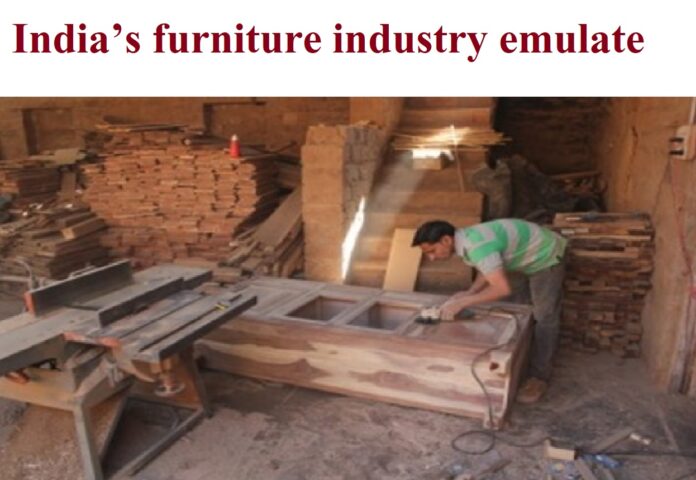NTI: As India rapidly ascends as one of the world’s fastest-growing economies, it stands at a critical juncture in its manufacturing journey. The decision to embrace large-scale automation may determine its ability to stay competitive on the global stage. A closer look at China’s approach to manufacturing reveals valuable insights that India might adopt to bolster its position in industries like furniture production.
China’s success in global manufacturing owes much to its early commitment to automation and the establishment of specialised industrial hubs. “China created furniture hubs, heavily investing to harness economies of scale,” explains Andre Eckholt, managing director of the Hettich Group. Despite the availability of affordable labour, China prioritised automation to safeguard productivity and quality, moving away from a labour-intensive model. The result is a highly efficient production model that maximises output without compromising precision or quality.
According to a recent World Bank report, India’s manufacturing sector could potentially double its share in the global manufacturing output by 2030—provided it focuses on automated, efficient production processes. India’s furniture and hardware sectors are booming, yet automation remains limited, with small-scale operators and local carpenters forming the backbone of the industry. While this decentralised structure caters to diverse local tastes, the absence of standardisation and automation hampers India’s ability to compete globally. “In terms of competitiveness on a global scale, you need to standardise and automate; only then does ‘made in India’ become attractive for global distribution,” says Eckholt, acknowledging that India’s journey toward automation is only just beginning.
India’s high-growth market presents an ideal opportunity for a pivot toward automation, especially as more global players eye India as an alternative manufacturing base. Eckholt points to modular furniture, particularly modular kitchens and wardrobes, as an area primed for transformation. Driven by rapid urbanisation and a booming housing market, modular furniture presents significant growth potential, which automation could unlock by reducing production costs and time.
Eckholt sees parallels between India’s growth path and China’s rise two decades ago, but with a uniquely Indian approach. While Hettich’s China operation has primarily focused on component manufacturing for global distribution, its India strategy is geared toward creating products tailored specifically to the Indian market. “India is an independent market – made in India for India, and now it’s going made in India for the world,” says Eckholt, emphasising the distinct growth trajectories of the two countries.
Furthermore, Hettich’s approach to making India a secondary manufacturing hub signals a pragmatic response to the disruptions in global supply chains and geopolitical uncertainties. Following the pandemic and various geopolitical conflicts, Hettich has prioritised India to diversify its production bases and reduce reliance on any single region. With India now contributing 15% to Hettich’s global revenue, approximately €1.5 billion, the commitment to “made in India, made for the world” is evident. “We are developing India as a second manufacturing hub to de-risk the supply chain globally,” says Eckholt.
India’s regulatory push, particularly through the Bureau of Indian Standards (BIS) and recent Quality Control Orders (QCOs), is also shaping the sector’s path toward quality and consistency. By aligning with these standards, companies like Hettich are investing in automation to meet local demand while scaling for global markets. Eckholt views this regulatory framework as a critical step in transforming India into a reliable, high-quality manufacturing hub.
As India continues to attract international attention, its adoption of automation and standardisation could position it as a formidable player in global manufacturing—a goal that, once achieved, would redefine “made in India” for the world.


